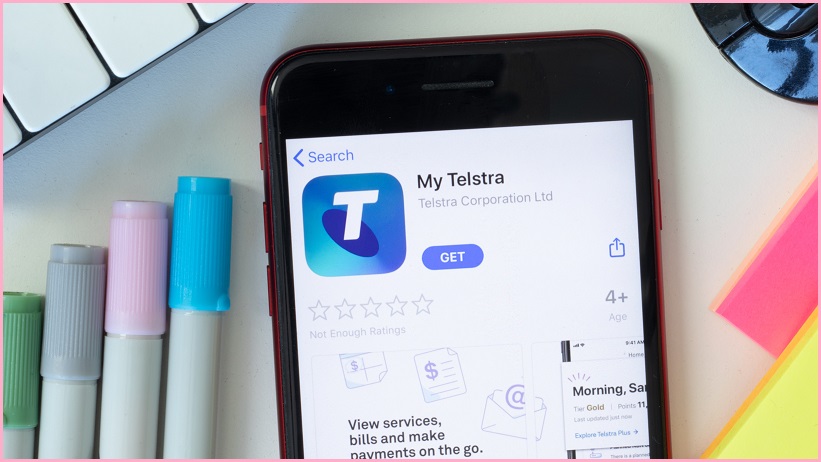The COVID-era explosion in demand for data didn’t translate into a revenue surge for Telstra, which saw earnings drop last year as it nears the end of a major restructuring that includes investing hundreds of millions in new industries such as energy and healthcare.
Total income for the company dropped by 11.6 per cent during fiscal 2020/21, the company revealed during its recent full-year results presentation, in which it revealed that earnings before interest, taxation, depreciation and amortisation (EBITDA) had dropped by 14.2 per cent compared to the previous year.
Net profit after tax earnings per share crawled into the black, up 3.4 per cent, after Telstra announced in February that it would fire 1,400 employees.
Telstra is a “vastly different company” two years into the execution of its T22 strategy, CEO Andy Penn said in revealing that Telstra had achieved 80 per cent of the milestones in the three-year plan announced in 2018.
All calls from consumers and small businesses will be answered by call centre operators in Australia by June 2022, he said, noting that Telstra had successfully reduced the number of calls to its contact centres by over two-thirds – achieving a key T22 goal a year earlier than expected.
“We have stayed focused on delivering what we said we would deliver,” he said, calling T22 “one of the largest and most ambitious transformations of a telco globally.”
Changes have included rationalising the number of service plans from 1,800 to just 20, he said, as well as removing traditional revenue-spinners such as excess data charges and lock-in contracts.
Yet even with 1.6m 5G devices now connected to a network that Telstra said covers over 75 per cent of Australia’s population, Penn admitted that mobile average revenue per user (ARPU) measures “have basically been declining since about 2015”.
“At the same time, data allowances have been going up dramatically,” he added, “to the point where most of our plans there are essentially no excess data charges.”
“We are in a period where we’re investing heavily in 5G,” he said, “and we’ve seen ARPU increase in the last 6 to 9 months or so – but that’s off the back of a period of 4 or 5 years’ decline.”
The transformation has also included the separation of Telstra infrastructure into a separate company called Telstra InfraCo – and, more recently, the separation of its mobile network towers to an InfraCo division called InfraCo Towers.
All told, Telstra has cut its workforce by a third – over 25,000 people – due to “the transfer of a material part of our business to the NBN,” Penn said.
The company had also exceeded its targets by recruiting over 1,500 new specialists in “exciting areas” such as data analytics, cybersecurity, AI, and software engineering – with nearly 17,000 people working in Agile teams.
Where the money is coming from
Yet even after its companywide spring clean bolstered profits by dumping thousands of Australians into a challenging COVID-era job market, Telstra is looking towards non-core businesses to bolster its lacklustre financials.
For example, the company’s Telstra Ventures investment arm – which brags of investments in 74 startups including 12 unicorns and four $US10b-plus success stories – had overcome its $500m Ooyala disaster to deliver nearly $300m in investment returns last year.
“Not only have our investments given us access to key insights and technologies,” Penn said, flagging “incredible success for a venture company [that] has been an accelerator of our own innovation.”
The company will be counting heavily on that innovation as it doubles down on its Telstra Health business, which has been building a capability in digital health on the back of acquisitions such as its majority stake in Adelaide-based billing firm PowerHealth and this month’s $350m purchase of medical-practice management giant MedicalDirector.
“Telstra Health is well-positioned,” Penn said, “and we’re excited by the inorganic growth” and the “green shoots in some of our growth businesses”.
Yet it is Telstra’s expansion into the energy sector that may raise more eyebrows when Penn releases “more detail on what comes after T22” at the company’s Investor Day on 16 September.
Announced late last year, Telstra Energy will see the longtime telco jumping into yet another new industry as it moves to offer electricity and gas to residential customers across the east coast.
Victoria’s Essential Services Commission was accepting public submissions on Telstra’s license application until 1 July and a decision is expected before the end of the year.
The company will face off against the likes of the Commonwealth Bank, which is also pushing into the energy and NBN sectors even as power companies like AGL also push into telecommunications.
The moves create significant cross-selling opportunities for the large companies’ millions-strong customer bases – providing what Penn called “really important opportunities for extra growth and value to the company.”










